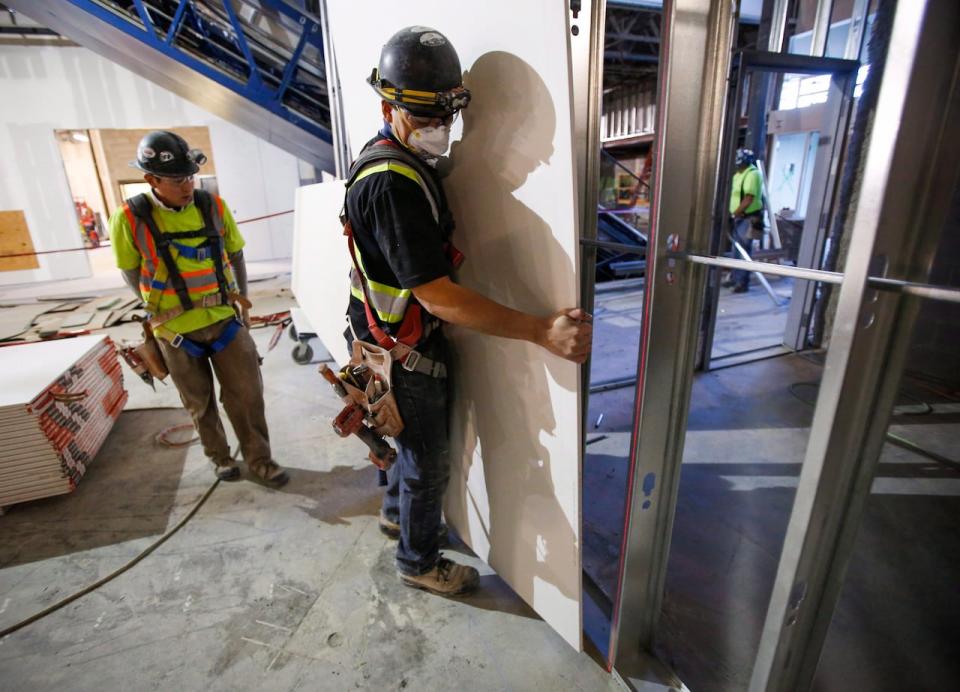The city released a multi-year forecast of Calgary's labour market. Here's what it found

Calgary's labour market is expected to cool over the next couple of years before staffing challenges are projected to re-emerge in the next budget cycle — but labour shortages in certain sectors could persist for the next decade.
That's according to the City of Calgary's new labour market outlook, which forecasts supply, demand and imbalances in Calgary's labour market from 2024 to 2033.
The report, which is an extension of the city's biannual economic outlook, is believed to be the first analysis of its kind at the municipal level, said the city's website.
City economist Stanley Kongnetiman, who's also the city's manager of corporate economics and regulatory affairs, said its main purpose is to help Calgary employers and workers better prepare for the future.
"It will help businesses and governments to have the information available to make decisions in terms of where to invest, so that they have the right people with the right skills available," said Kongnetiman.
"For people that are leaving school, people that are entering the workforce, this will be a good reference for them to take a look at and focus on the skills that are in high demand."
According to the report, Calgary's aging population mixed with a post-pandemic surge in demand for workers led to a tighter labour market in recent years. But record numbers of people moving to Alberta started to cool the market last year, a trend that is expected to last until about 2026.
However, the market is predicated to narrow once more in the next budget cycle — from 2027 to 2030 — unless governments take action, said Kongnetiman.
"It's going to be a combination of economic expansion as interest rates moderate, coupled also with the slowdown in population growth which will lead to a slowdown in job seekers and a surge in job openings."
Labour shortages, surpluses
For some industries, despite the market's ups and downs, staffing challenges are forecasted to persist over the next decade.
The report said construction, retail, education, and hospitality come out on top of long-term labour shortages.

Construction is among the industries that are expected to face long-term labour shortages. It comes as the sector faces pressures to build more housing to relieve the housing crisis. (The Canadian Press)
Kongnetiman said that could be an opportunity for people who are looking for work in Calgary.
"If you want to re-enter the labour market or leave school, maybe you should look at some of these occupations," he said.
On the other hand, in the same time frame, the report outlined some projected labour surpluses.
That includes auditors, accountants, investment professionals and those in the insurance and real estate industries.
Becoming part of the solution
Janet Lane, director of skills, innovation and productivity with the Canada West Foundation, said that while its important for employers to understand labour forecasts, they also need to do a better job of being part of the solution.
If not, it will cost their businesses, she said.
"Employers have been adjusting to the fact that they can't find people, and one of the nerve wracking things about that is that they're settling for less than what their potential is as businesses," said Lane.
"That can mean lower productivity and what will eventually happen is that there will be a lack of growth as well.... That is worrisome for employers and for the economy as a whole and for the city."

Janet Lane is the director of skills, innovation and productivity at the Canada West Foundation, a public policy think tank based in Calgary. (Canada West Foundation)
She said to improve labour shortages, employers need to better collaborate with post-secondary institutions to develop the right skills needed in the workforce.
They also need to improve the quality of the job they're looking to fill — whether that's better pay, better benefits, or hiring people permanently instead of on contract. Providing chances for employees to advance through a workplace is also a draw.
Policy changes
Back at the city, the report recommends that the municipal government take five policy actions to address projected labour market imbalances, including:
Advocating for immigration policies to target workers of the right age, who are equipped with the right skills.
Supporting making it easier for qualified internationally-trained workers to get their licenses here.
Introducing mobility incentives to cover bureaucratic costs for workers in regulated occupations who want to move to Alberta from other provinces.
Advocating for the province to invest in education and training programs for occupations facing acute labour shortages.
Encouraging underrepresented groups, such as youth and women, to participate in the workforce.
Kongnetiman said they plan to release an update each year, with the next version pegged to come out in early 2025.


